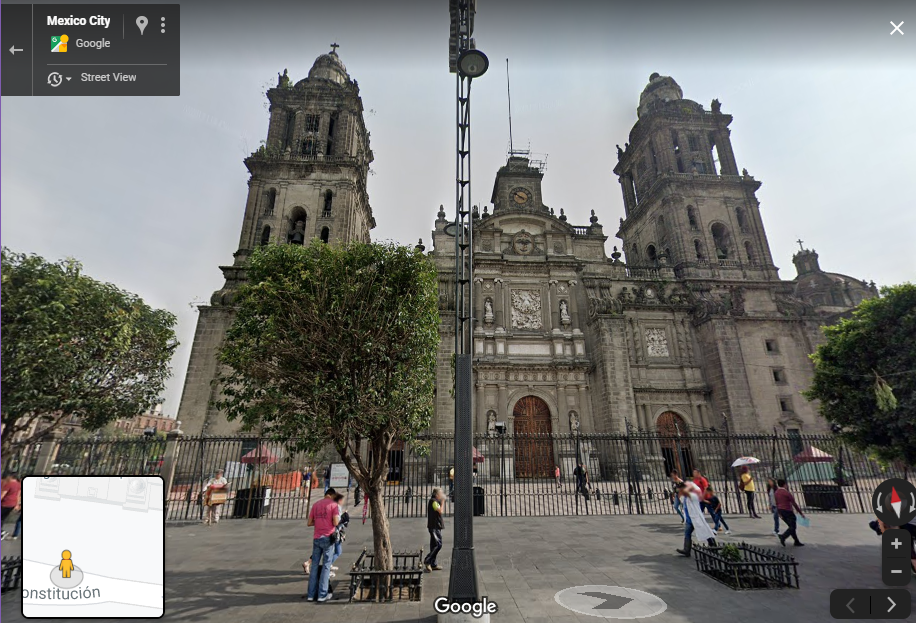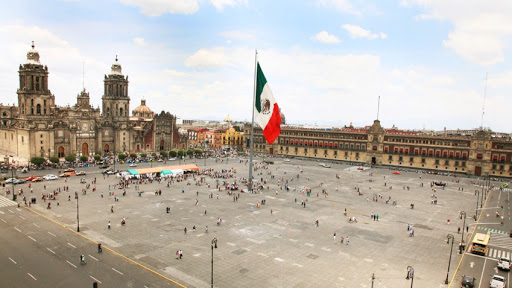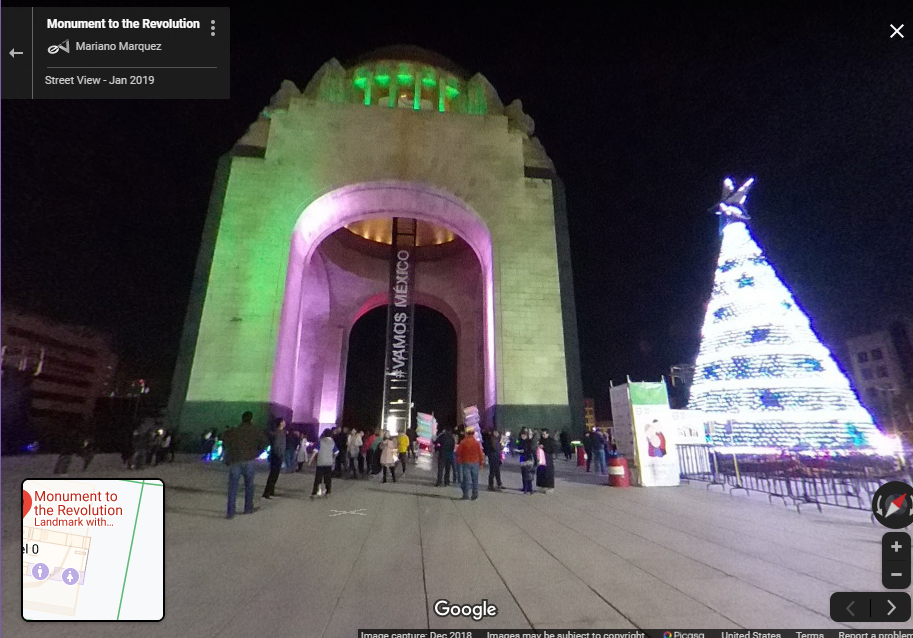- First Street View of Cathedral Metropolitana
- Second Street View of Zocalo
- Third Street View of Monumento a la Revolucion
- Link to First Panorama of Cathedral Metropolitana
- Link to Second Panorama of Zocalo
- Link to Third Panorama of Monumento a la Revolucion
- Route from Centro Historico de la Ciudad de Mexico to Zocalo
- Route from Acuario Mazatlan to Catedral Basilica de la Inmaculada Concepcion
- Route from Parque Zoologico del Centernario to Gran Museo del Mundo Maya
- The Value of Travel
Street View Screen Captures
Cathedral Metropolitana

The Metropolitan Cathedral of Mexico City is considered to be one of the largest of its kind in the Western Hemisphere. Built over the course of 250 years (1573-1813), the architectural design of this cathedral was influenced by several eras of history: Spanish Baroque, Renaissance, and Neoclassical styles. The Metropolitan Cathedral has two neoclassical towers that hold 18 bells.
Zocalo

The heart of Mexico City is the Plaza de la Constitucion. Residents began calling it the Zocalo, meaning "base", in the 19th century, when plans for a major monument to independence went unrealized, leaving only the pedestal. Measuring 220m from north to south, and 240m from east to west, it is one of the worlds largest city squares (Lonely Planet, 2020). You can actually see in the image what looks to be decorations for the upcoming Dia de los Muertos celebration.
Monumento a la Revolucion

This monument commemorates the Mexican liberation from the Spaniards and was created by architect Carlos Obregon Santacilia and took 28 years to build because of the ongoing Mexican Revolution (1910-1938). Standing at 67m high, it is considered the tallest triumphal arch in the world. This monument is also the burial place of several Mexican heroes of the revolution: Francisco I. Madero, Francisco "Pancho" Villa, Venustiano Carranza, Plutarco Elias Calles, and Lazaro Cardenas.
Links to Street View Panoramas
Example I - Cathedral Metropolitana
Example II - Zocalo
Example III - Monumento a la Revolucion
Map Channels Street View Player
| Full Page Route Map | Create New Route Map |
Street View animation from the Historic City Center of Mexico to the Zocalo. A street view animation takes us between two locations in Mexico City first starting at the historical center and driving down a multitude of one way streets. You can see that there are also bike lanes along the right side of the road. As you approach Zocalo, you can see the Cathedral Metropolitana in the horizon.
| Full Page Route Map | Create New Route Map |
Street View animation from the Acuario Mazatlan where tourists and citizens alike can view fish in tanks, watch live animal shows, and swim with sharks and sea lions to the Mazatlan Cathedral near Playas del Sur. Taking Avenue del Mar southward along the coast, you can look to the right and view the beautiful waters of the Pacific Ocean and to your left many of the hotels that occupy the coastline. You eventually turn into central part of Playas del Sur, taking a right down 21 de Marzo will lead to you the Basilica.
| Full Page Route Map | Create New Route Map |
Street View animation from the Parque Zoologico del Centernario which exhibits a wide range of animals to the Mayan World Museum of Merida which exhibits Mayan works of art, handicrafts, and history. We begin our journey from the zoo on our right and travel down a divided roadway and into what appears to be a long stretch of businesses and residences. You can tell by the plant life how close you are getting towards the Gulf of Mexico. Travelling down a two lane highway for quite a ways until you take the off-ramp to HWY 261. Once you pass Calle 3B, the Gran Museo del Mundo Maya will be on your right.
Moores Where to Invade Next
Armond White has an interesting point of view when analyzing the film; I think the reasoning behind his sharply critical view comes from his conservative political views which clouds what Moore is trying to bring forth to his audience. Armonds viewpoint wants the film to show that other parts of the world are just as flawed as the United States. However, when putting aside politics, you can understand what Moore is trying to show and say, which is that although the United States has its issues and nowhere near perfect, other countries have similar problems and this is how to they view the problems and attempt to fix it.
Submitted by Katie Holderfield on 4/10/2020